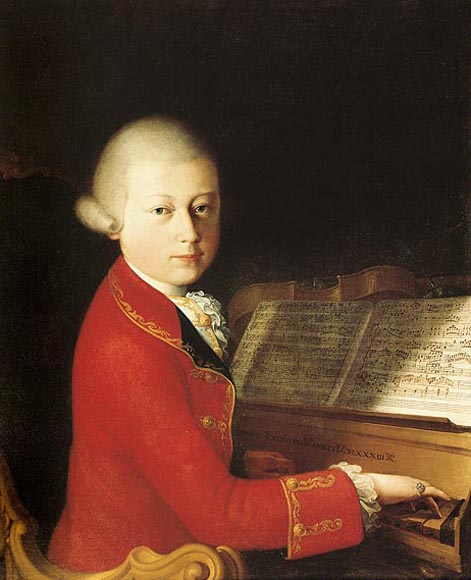 Antonín Dvořák began his musical career as a violist in the National Theater Orchestra in Prague, and played in a concert of Richard Wagner's works that was conducted by Wagner himself. He began composing as a child, and his first documented composition as an adult was his string quintet written in 1861. After his marriage in 1873 he retired from the orchestra and took a position as a church organist in Prague. This new position gave him financial security and more time to devote to composing.
Antonín Dvořák began his musical career as a violist in the National Theater Orchestra in Prague, and played in a concert of Richard Wagner's works that was conducted by Wagner himself. He began composing as a child, and his first documented composition as an adult was his string quintet written in 1861. After his marriage in 1873 he retired from the orchestra and took a position as a church organist in Prague. This new position gave him financial security and more time to devote to composing.Included in the list of chamber works composed by Antonín Dvořák over a period of practically 30 years are two works for piano quintet. Both are for piano, two violins, viola and cello, and both are in the key of A major. Fifteen years separate the two works and it was Dvořák's intention to revise the first quintet as he had not been satisfied with it, but changed his mind and decided to write an entire new work. The work was composed late in 1887 and premiered the following January.
Along with Smetana, Dvořák used his native Czech music as an inspiration for his compositions. He doesn't always use authentic Czech melodies, but he wrote in the style of Czech music and used Czech musical forms in his works, including the Piano Quintet No. 2. Dvořák infused the rhythms of idealized peasant dancing throughout the work and has created one of the masterpieces for the combination of piano and string quartet.The quintet is in 4 movements:
I. Allegro ma non troppo - The work begins with a gentle, lyrical theme played by the cello, but the mood suddenly shifts with the passionate uttering of a violin. The lyricism reappears in the piano and is taken up by the violin.Another outburst, this time from the piano. New material is introduced by the cello, taken up by the violin and piano in turn. The music turns more dramatic and passionate, and the entire sequence is taken from the beginning. After the repeat, the exposition of the movement in Dvořák's creative use of sonata form leads to the development section. The previous material is varied and expanded and has a seamless flow to it that leads to the recapitulation and ending of the movement. The entire movement has a wealth of thematic material, alternates between drama and calmness, energy and lyricism. It is a masterpiece of compositional skill and artistry.
II. Dumka : Andante con moto - Dumka is a type of dance, the name taken from the Ukrainian language and in music it originally means a piece in a melancholy mood. When Dvořák and other Slavic composers incorporated it into their compositions, its form changed to a melancholy tune interrupted by music of a more cheerful nature. It is essentially a rondo by a different name, at least in this case.
III. Scherzo (Furiant): Molto vivace - A Furiant is another type of dance that sometimes follows the Dumka. By its nature it is in contrast to the Dumka as a Furiant is a fast and furious dance with shifting accents. Dvořák uses the form of a scherzo for his Furiant. The middle section or trio of the piece is much slower in tempo than the first part of the movement, but it is made from the theme of the furiant itself.
IV. Finale: Allegro - Again Dvořák treats the listener to a wealth of themes, some of them similar in mood to another Slavic dance, The Polka. These themes are developed throughout the short movement and one is even given a fugal treatment. The music shifts from major to minor key, in mood from exuberant to calm, giving the movement a sense of tonal color. The music shifts the mood to slow and reserved before it grows in intensity with what could be thought of as an energetic stomping of dancing feet for a grand ending to the piece.







